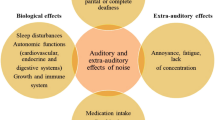Abstract
In this paper fuzzy soft set based Traffic Accident Alert Model is proposed to predict the highly accidental spots in Bhopal city the capital of Madhya Pradesh state, India. The proposed model involves two decision factors Ri and Si for the correct prediction. Accident is an uncertain event. Fuzzy soft set is a suitable approach to handle the uncertainties. The six locations (U) and seven parameters (E) are used in the proposed model. To test the proposed model a survey is conducted for datasets collection. The survey is done within Bhopal city and ten thousand samples are collected from the people affected by accident. Result and analysis of the proposed algorithms show the accidental spot(s) prediction. The comparative analysis has been done of the proposed method with existing methods. The proposed method shows the better performance.



Similar content being viewed by others
References
Pawlak Z (1982) Rough sets. Int J Inf Comput Sci 11:341–356
Zadeh LA (1965) Fuzzy sets. Inf Control 8:338–353
AAA Foundation for Traffic Safety (2001) Older driver involvement in injury crashes in Texas 1975–1999, College Station, Texas
Austin RA, Faigin BM (2003) Effect of vehicle and crash factors on older occupants. J Saf Res 34:441–452
Baker TK, Falb T, Voas R, Lacey J (2003) Older women drivers: fatal crashes in good conditions. J Saf Res 34:399–405
Bedard M, Guyatt GH, Stones MJ, Hirdes JP (2002) The independent contribution of driver, crash, and vehicle characteristics to driver fatalities. Accid Anal Prev 34:717–727
Braver ER, Trempel RE (2004) Are older drivers actually at higher risk of involvement in collisions resulting in deaths or non-fatal injuries among their passengers and other road users? Inj Prev 10:27–32
Collia DV, Sharp J, Giesbrecht L (2003) The 2001 National household travel survey: a look into the travel pattern of older driver Americans. J Saf Res 34:461–470
Dellinger AM, Langlois JA, Li G (2002) Fatal crashes among older drivers: decomposition of rates into contributing factors. Am J Epidemiol 155(3):234–241
Hakamies-Blomqvist L, Siren A (2003) Deconstructing a gender difference: driving cessation and personal driving history of older women. J Saf Res 34:383–388
Hang JYC, Nikiforos S, Lisa AH (2003) Evaluating the impact of passengers on the safety of older drivers. J Saf Res 34(4):343–351
Highway Safety Information System (1999) Summary Report Accident analysis of older drivers at intersections. Retrieved from http://www.hsisinfo.org/pdf/94-021.htm
Hu PS, Trumble DA, Foley DJ, Eberhard JW, Wallace RB (1998) Crash risks of older drivers: a panel data analysis. Accid Anal Prev 30(5):569–581
Keskinen E, Ota H, Katila A (1998) Older drivers fail in intersections: speed discrepancies between older and younger male drivers. Accid Anal Prev 30(3):323–330
Kostyniuk LP, Shope JT (2003) Driving and alternatives: older drivers in Michigan. J Saf Res 34(4):407–414
Lam LT, Norton R, Woodward M, Connor J, Ameratunga S (2003) Passenger carriage and car crash injury: a comparison between younger and older drivers. Accid Anal Prev 35(6):861–867
Lee HC, Cameron D, Lee AH (2003) Assessing the driving performance of older adult drivers: on-road versus simulated driving. Accid Anal Prev 35(5):797–803
Lee HC, Lee AH, Cameron D (2003) Validation of a driving simulator by measuring the visual attention skill of older adult drivers. Am J Occup Ther 57(3):324–328
Lee HC, Lee AH, Cameron D, Li-Tsang C (2003) Using a driving simulator to identify older drivers at inflated risk of motor vehicle crashes. J Saf Res 34(4):453–459
Lyman S, Ferguson SA, Braver ER, Williams AF (2002) Older driver involvements in police reported crashes and fatal crashes: trends and projections. Inj Prev 8:116–120
McGwin G, Brown DB (1999) Characteristics of traffic crashes among young, middle-aged, and older drivers. Accid Anal Prev 31:181–198
Mori Y, Mizohata M (1995) Characteristics of older road users and their effect on road safety. Accid Anal Prev 27(3):391–404
Owsley C, Stalvey BT, Phillips JM (2003) The efficacy of an educational intervention in promoting self-regulation among high-risk older drivers. Accid Anal Prev 35(3):393–400
Richardson ED, Marottoli RA (2003) Visual attention and driving behaviors among community living older persons. J Gerontol 58(9):M832–M836
Roge J, Pebayle T, Lambilliotte E, Spitzenstetter F, Giselbrecht D, Muzet A (2004) Influence of age, speed and duration of monotonous driving task in traffic on the driver’s useful visual field. Vision Res 44(23):2737–2744
Stutts JC, Wilkins JW (2003) On road driving evaluations: a potential tool for helping older adults drive safely longer. J Saf Res 34:431–439
UAB (University of Alabama at Birmingham) Center for Research on Applied Gerontology) (2001) Predicting Crash Involvement in Older Drivers. UAB Magazine, Winter
Zhang J, Lindsay J, Clarke K, Robbins G, Mao Y (2000) Factors affecting the severity of motor vehicle traffic crashes involving elderly drivers in Ontario. Accid Anal Prev 32:117–125
Chen D, Tsang ECC, Yeung DS, Wang X (2005) The parameterization reduction of soft sets and its applications. Comput Math Appl 49:757–763
Molodtsov D (1999) Soft set theory—first results. Comput Math Appl 37:19–31
Molodtsov D (2004) The theory of soft sets. URSS Publishers, Moscow (in Russian)
Maji PK, Roy AR, Biswas R (2002) An application of soft sets in a decision making problem. Comput Math Appl 44:1077–1083
Maji PK, Bismas R, Roy AR (2003) Soft set theory. Comput Math Appl 45:555–562
Maji PK, Biswas R, Roy AR (2001) Fuzzy soft sets. J Fuzzy Math 9(3):589–602
Aktas H, Cagman N (2007) Soft sets and soft groups. Inf Sci 177:2726–2735
Roy AR, Maji PK (2007) A fuzzy soft set theoretic approach to decision making problems. J Comput Appl Math 203:412–418
Feng F, Jun YB, Liu X, Li L (2009) An adjustable approach to fuzzy soft set based decision making. J Comput Appl Math. http://dx.doi.org/10.1016/j.cam.2009.11.055
Author information
Authors and Affiliations
Corresponding author
Rights and permissions
About this article
Cite this article
Thakur, G.S. Fuzzy Soft Traffic Accident Alert Model. Natl. Acad. Sci. Lett. 37, 261–268 (2014). https://doi.org/10.1007/s40009-014-0235-6
Received:
Revised:
Accepted:
Published:
Issue Date:
DOI: https://doi.org/10.1007/s40009-014-0235-6




